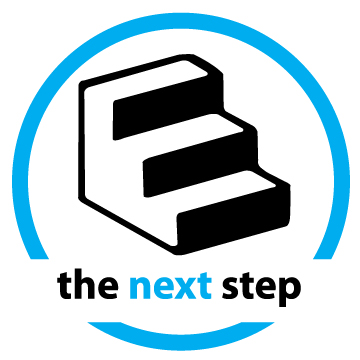Creating Diversity and Inclusion in Your Company

Whether you’re just starting out in implementing diversity and inclusion policies within your organization or already have some initiatives in place, creating lasting impact will take more than hoping for the best.
Diversity and Inclusion Success Depends on Cultural Change
First, it’s important to note that diversity and inclusion do not mean the same thing, but are two concepts that work together in harmony. Diversity is about the differences that people bring to the table, and inclusion is about making sure that all people, regardless of race, gender, identity, etc., are able to be respected and valued as equals within the workplace. With the right assessments, sensitivity training, hiring, mentoring, and career guidance that are part of a successful diversity and inclusion program, you’ll be well on your way to making structured positive change.
However, all of these efforts must build a solid foundation and continually assess that foundation. Diversity and inclusion is an ongoing process that starts from within, not simply a checklist to be marked off. The following is a list of things to evaluate as you work to build lasting cultural change, and continue to build on the success of any future diversity and inclusion efforts.
Do: Make it a company-wide effort, including senior leadership
Don’t: Leave diversity and inclusion efforts up to the employees and HR
While creating a diversity and inclusion policy or charter is a great start at changing company culture, this is really just the beginning. Ensuring that employees of all backgrounds feel comfortable in the workplace is an ongoing process that takes work from everyone within the company. Most diversity and inclusion programs are initiated through human resources, and in some cases, evolves to an employee-led committee. However, for these efforts to be successful, they need top down engagement, with support from all levels of management.
While HR and individual employees can help uncover some problem areas, they are still limited in the power they have to make actual lasting change. Lack of buy-in from senior leadership as part of that accountability can lead to stagnation and the potential for resentment among your workforce.
Do: Make sure that it continues to be a gradual and structured ongoing effort
Don’t: Let it fall flat after a few initial conversations
Often, conversations about diversity and inclusion initiatives come about as a reactive response to recent events. We can feel inspired to create change in the moment, but it’s important to remember that creating lasting and impactful change is a long game. Sometimes companies create programs in a well-meaning attempt to be socially aware, feeling pressure from customers and peers. Avoid creating short-term programs, and remember authenticity is what matters.
An example of a short term program is Blackout Tuesday, which started in the music industry, to post a black square on Instagram to support communities of color. Many companies participated in the Instagram event (hats off!), but after the initial wave, the hope is that these same companeies have made it an ongoing mission to show continued support for equality and diversity through other outlets.
Do: Examine potential internal barriers to hiring diverse employees
Don’t: Hire diverse employees to check a box
Often, companies will attempt to solve company cultural challenges by proactively recruiting BIPOC professionals. Kicking diverse hiring into high gear is often the first go-to response for making immediate change. The challenge is that once the initiative trails off, the same status quo exists.
When the status quo is the same, the hiring managers response is, “At the end of the day, we hire the best person for the job, regardless of demographic.” One solution is to really examine the things that you are doing to make sure opportunities are accessible and attractive to the diverse people you’re hoping to add to your team. A lack of diverse applicants for roles within your company might indicate it’s time to evaluate making some foundational changes to the recruitment process.
Do: Acknowledge past mistakes and aim to be better as a company
Don’t: Ignore, explain away, or trivialize the real experiences fo employees
In addition to hiring diverse talent, you need to ensure the well being of the employees you already have. Research shows that strong two-way communication between employees and leadership is key to building a diverse and strong company culture.
If current employees from diverse backgrounds within your company don’t feel valued within the current culture, you may just create a revolving door of dissatisfied employees. If/when incidents involving employees are reported, make sure your process includes a thorough investigation and review of the final report. This will enable leadership to clearly assess if there is an indicator of larger problem.
Encourage employees of all levels to hold each other, even leadership, accountable for their behavior. If your employees don’t feel like their concerns are addressed, they will stop speaking up and will leave. Building this internal foundation of trust and accountability can bolster your hiring goals while also contributing to the overall health of your current company culture. Always be thinking, “Are we creating a culture that would make people actively want to work for us?”
Do: Celebrate and acknowledge differences as a part of a positive human experience
Don’t: Ignore or overly focus on people’s differences in day-to-day speech
Bias and discrimination in the workplace are a lot more common than many business leaders would like to admit. A 2019 Glassdoor survey 1,100 US employees found that three out of five (61%) of US employees had witnessed or experienced workplace discrimination based on age, race, gender, or LGBTQA+ identity.
A lot of this discrimination comes in the form of microaggressions, which are indirect, covert, and very often unintentional. Because they are not overt expressions, they are easily ignored or explained away. However, they can still detract from your company’s culture and could be detrimental to your progress in improving that culture.
You can start fighting microaggressions by listening to the affected parties, being more conscious of personal biases, and communicating alternative phrases employees can say instead.
For an example of words and phrases you can start eliminating from your company’s lexicon, please check out this helpful guide of MicroAggressions You Might Not Know You Are Committing At Work.
Do: Survey employees periodically and keep up to date on your company’s Glassdoor, Google and Yelp ratings
Don’t: Assume you’re doing it right if you don’t hear anything
If employees from all groups don’t have a voice or don’t have equal opportunities within the company, no matter how diverse your company seems to be, it still may not be inclusive. As mentioned, diversity and inclusion must both be present in order for all of your hard work to create a positive company culture.
Don’t wait for your employees to come with you to problems – often by the time they get to the point where they’re ready to speak up, things are already pretty bad. Instead, be proactive by conducting company-wide surveys to ask about all employees experiences. You can also ask these questions in all exit interviews to determine whether or not there is room for improvement and growth.
Another good tip is to check your company’s ratings on Glassdoor, Google, and Yelp. Sometimes employees and even customers can provide insights that can tell you what you’re doing right and where you need to improve. Note that any of this data must be acted upon to be of value.
In the End, Improving Company Culture Depends on Communication
A common theme that all of these statements have is communication. By having productive dialogues between employees of all levels where you are dedicated to listening and absorbing feedback, you will not only learn great insights you can apply to your company, but also will be able to build trust and better relationships with all of your employees.
It’s only when employees know that leaders in an organization are open to change that you will be able to create a company culture that can reap the rewards of diversity.


